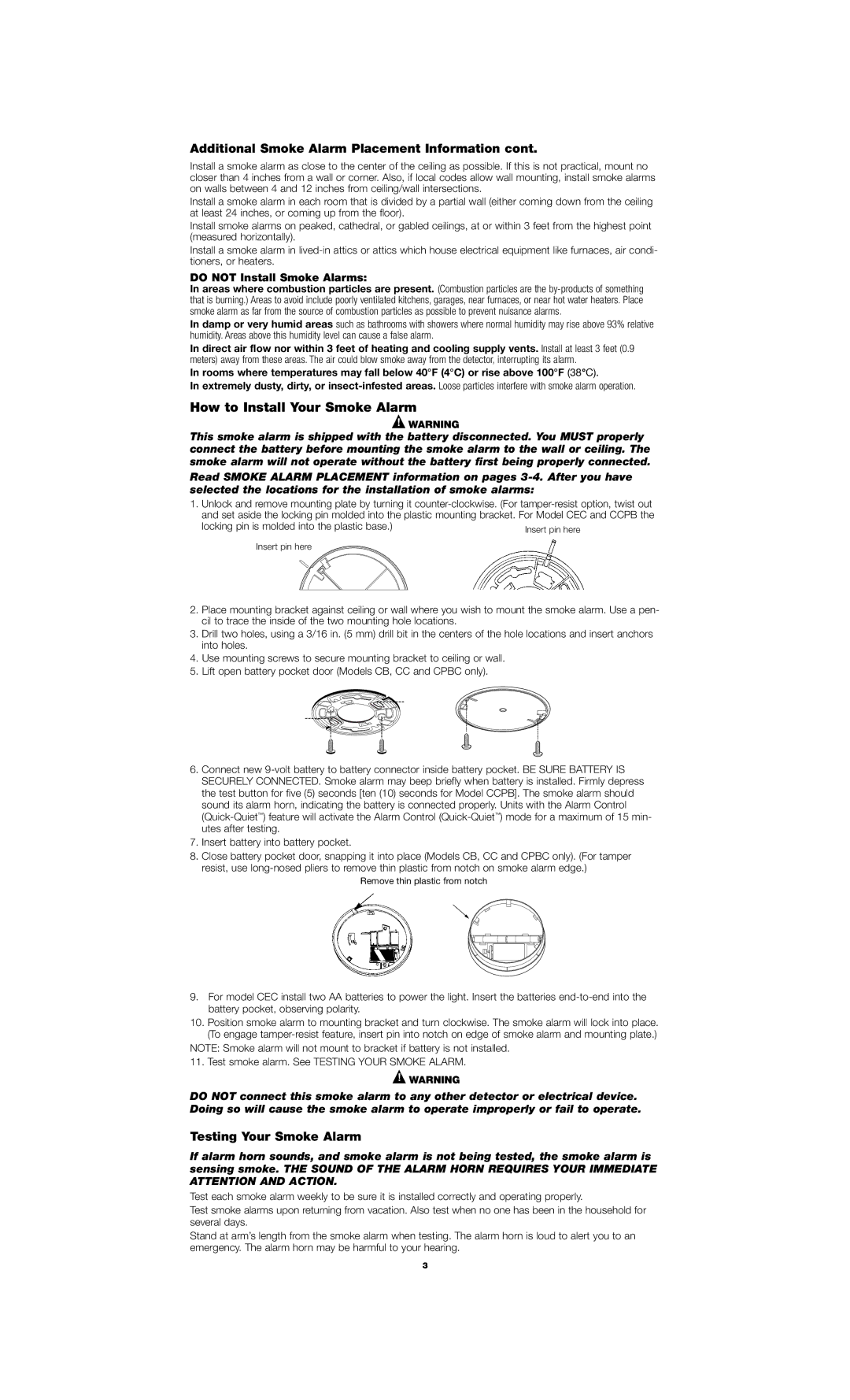110-1011E specifications
The Firex 110-1011E is a highly regarded smoke alarm that emphasizes safety and reliability in residential settings. As a vital component of any home safety system, this device integrates advanced technologies to enhance its performance and user-friendliness.One of the standout features of the Firex 110-1011E is its use of an ionization sensing technology. This technology is particularly effective at detecting fast-flaming fires, making it an essential tool for early smoke detection. The ionization sensor works by employing a small amount of radioactive material, which helps in creating a current between two electrodes. When smoke enters the sensing chamber, it disrupts this current, triggering the alarm, thus providing timely warnings when it matters most.
In addition to its superior sensor technology, the Firex 110-1011E boasts a unique battery backup feature. This ensures that the alarm remains operational even during power outages, a crucial aspect during emergencies when electricity might be compromised. The device is powered by a 9-volt battery, which is easy to replace and maintain.
Another key characteristic of the Firex 110-1011E is its user-friendly design. The alarm features a simple test button that allows homeowners to check the functionality of the unit regularly. This promotes proactive maintenance, ensuring that the device operates efficiently when needed. Furthermore, the alarm comes equipped with a loud 85-decibel alarm that is designed to be heard easily throughout the home, providing an effective warning to occupants.
The Firex 110-1011E is also designed with the homeowner’s peace of mind in mind. It includes a low battery warning feature, which signals when the battery needs replacement, reducing the risk of the alarm being non-operative due to a dead battery. Its compact design ensures it can be easily installed in various locations within a home, from hallways to bedrooms.
In summary, the Firex 110-1011E smoke alarm is a high-performance device that combines advanced ionization sensing technology with practical features like battery backup and user-friendly operation. Its reliable design makes it an invaluable addition to any household’s safety measures, ensuring protection against the dangers of fire. Investing in the Firex 110-1011E means prioritizing safety and taking a proactive approach to fire prevention.

